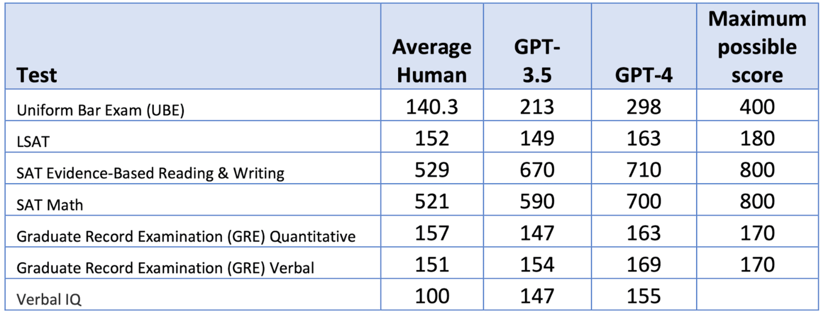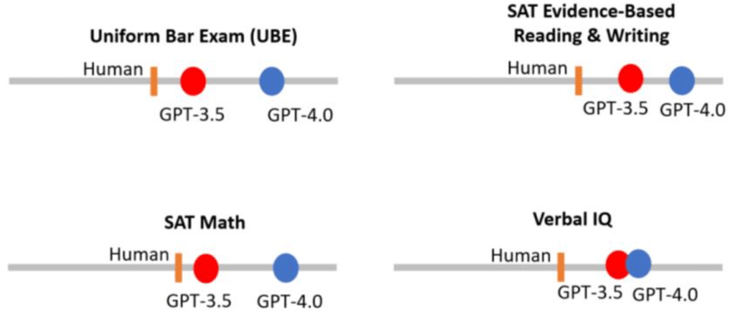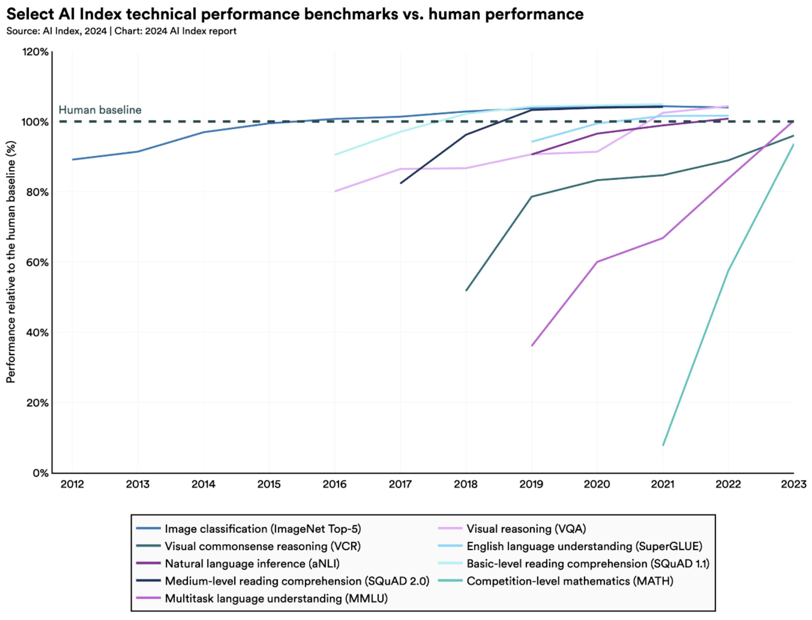Chapter 2, Part 2 — AI in Education Today
AI is already in classrooms, from ChatGPT to personalized tutoring systems, forcing educators to confront its power, promise, and potential pitfalls.


Chapter 2, Part 2 — AI and Its History
AI in Education Today
Today, AI is being rapidly adopted by students all over the country and schools are being forced to adapt. A report from Stanford indicates that ChatGPT has garnered over 100 million unique users, with 30% of college students using it for their assignments (Chen, 2023). This makes it one of the fastest-adopted technologies, especially within educational contexts (Chen, 2023).
Recent advances in AI’s capabilities are impressive, with many computers able to score higher than most humans in many different tests (Hamilton et al., 2023). These advancements are already demonstrating the superior power of computers over humans in many sectors, including education, and mimicking the success of AlphaGo. For example, according to the findings of Bruno Campello de Souza and Antonio Roazzi, GPT-4—the most recent version of ChatGPT—surpasses 90% of individuals on both the Uniform Bar Exam and the SAT, achieves better than 88% of people on the LSAT, and possesses a verbal IQ that places it in the top 0.02% of the human population.


Figure 1: Human Vs ChatGPT on a Range of Tests (Hamilton et al., 2023).
As of 2023, Stanford researchers have noted that AI already excels in tasks like image classification, visual reasoning, and understanding English, surpassing human capabilities in these areas. However, these researchers also highlight that AI still struggles with more complex cognitive tasks such as visual commonsense reasoning and solving advanced mathematical problems typical of math competitions.


Figure 2: Scaled Representation of Human vs ChatGPT On a Seb-set of Tests (Hamilton et al., 2023).


While some researchers may express enthusiasm for these developments, others caution against premature optimism. They argue that these achievements might be overstated and that AI technology still falls short of meeting the high expectations set for it. Vanessa Parli, Associate Director of Research Programs at the Stanford Institute for Human-Centered AI and a member of the AI Index steering committee, offers a tempered view saying, “There’s been a lot of excitement, and it meets some of these benchmarks quite well, but when you actually use the tool, it gives incorrect answers, says the thing we don’t want it to say and is still difficult to interact with” (Perrault et al., 2024; Lynch, 2023). This suggests that while AI has made significant strides, it still has considerable limitations to overcome before it can fully meet the lofty expectations set for it.
Despite these challenges, AI continues to make rapid progress. The current consensus in the AI community is that existing Large Language Models like GPT-4 have surpassed the capabilities of “Narrow AI” and are beginning to show elements of “Artificial General Intelligence” (Hamilton et al., 2023).
Figure 3: Select AI Index Technical Performance Benchmarks vs. Human Performance( Perrault et al., 2024).
References
Anyoha, R. (2017, August 28). The history of artificial intelligence. Science in the News, Harvard University. https://sitn.hms.harvard.edu/flash/2017/history-artificial-intelligence/
Barenholtz, L. (2023, November 9). Most searched things on Google in 2023. World Population Review. https://worldpopulationreview.com/country-rankings/most-searched-things-on-google
Chatterjee, S., & Bhattacharjee, K. K. (2020). Adoption of artificial intelligence in higher education: A quantitative analysis using structural equation modelling. Education and Information Technologies, 25, 3443–3463. https://doi.org/10.1007/s10639-020-10152-1
Encyclopaedia Britannica. (2023, October 5). Automaton. https://www.britannica.com/technology/automaton
Guan, C., Mou, J., & Jiang, Z. (2020). Artificial intelligence innovation in education: A twenty-year data-driven historical analysis. International Journal of Innovation Studies, 4(4), 134–147. https://doi.org/10.1016/j.ijis.2020.09.001
Haenlein, M., & Kaplan, A. (2019). A brief history of artificial intelligence: On the past, present, and future of artificial intelligence. California Management Review, 61(4), 5–14. https://doi.org/10.1177/0008125619864925
Hamilton, A., Wiliam, D., & Hattie, J. (2023). The future of AI in education: 13 things we can do to minimize the damage. Working paper. https://www.researchgate.net/publication/373108877
Kissinger, H. A., Schmidt, E., & Huttenlocher, D. P. (2022). The age of AI: And our human future. Back Bay Books.
Mukherji, S. K. (2020). Machine learning and other artificial intelligence applications. In R. Forghani (Ed.), Neuroimaging Clinics of North America, 30(4), i–ii. https://doi.org/10.1016/S1052-5149(20)30067-8
Stone, P., Brooks, R., Brynjolfsson, E., Calo, R., Etzioni, O., Hager, G., ... & Teller, A. (2016). Artificial intelligence and life in 2030: One hundred year study on artificial intelligence: Report of the 2015–2016 study panel. Stanford University. https://ai100.stanford.edu/2016-report